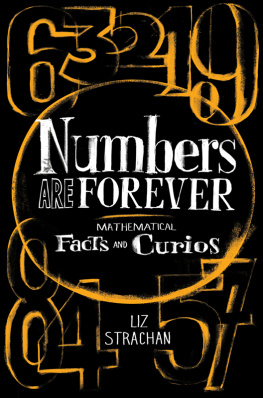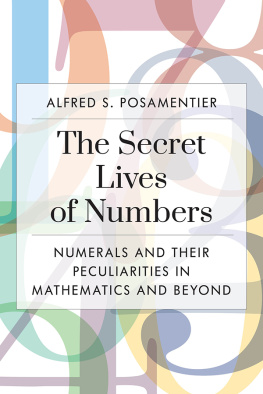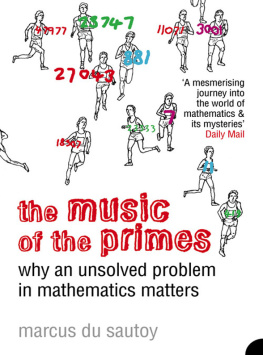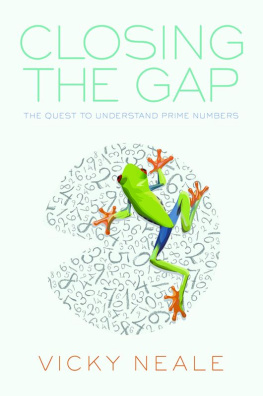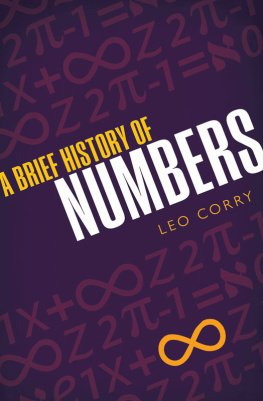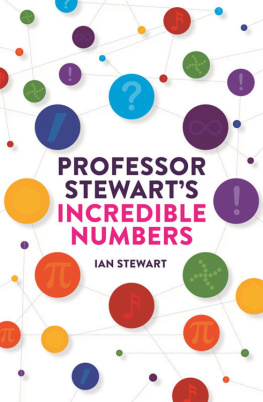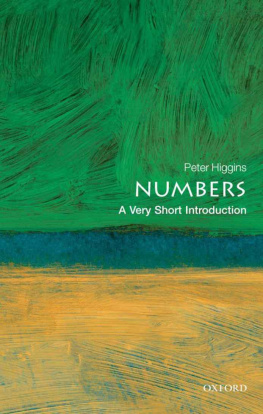Liz Strachan was a maths teacher for thirty-six years. Her writing career started just before she retired when, on a whim, she entered and won first prize in the European Letter Writer of the Year Competition. Since then, she has published about 200 articles and short stories and, at the Scottish Association of Writers Annual Conference, she has won six first prizes and numerous other awards. She is married, and has two sons and four grandchildren.
Numbers are Forever
LIZ STRACHAN
Constable London
Constable & Robinson Ltd
55-56 Russell Square
London WC1B 4HP
www.constablerobinson.com
First published in the UK by Constable,
an imprint of Constable & Robinson Ltd., 2014
Copyright Liz Strachan 2013
The right of Liz Strachan to be identified as the author of this work has been asserted by her in accordance with the Copyright, Designs & Patents Act 1988
All rights reserved. This book is sold subject to the condition that it shall not, by way of trade or otherwise, be lent, re-sold, hired out or otherwise circulated in any form of binding or cover other than that in which it is published and without a similar condition including this condition being imposed on the subsequent purchaser.
A copy of the British Library Cataloguing in Publication
Data is available from the British Library
ISBN 978-1-47211-104-3 (paperback)
ISBN 978-1-47211-110-4 (ebook)
Printed and bound in the UK
1 3 5 7 9 10 8 6 4 2
Cover copyright Carlos Castro
Contents
Acknowledgement
I wish to thank my editor, Hugh Barker (who admits to a certain fondness for the subject), for suggesting that I should write Numbers are Forever and encouraging and supporting me throughout.
Introduction
I do not claim to be a brilliant mathematician. As George Bernard Shaw said, He who can, does. He who cannot, teaches.
However, I was an enthusiastic teacher of mathematics for thirty-six years and, more importantly, I was a teacher of teenagers, many of whom were not avidly keen on the subject and needed to be cajoled, diverted and entertained. Maths teachers particularly hate the dreaded last twenty minutes on a Friday afternoon when teenage brains have shut down for the weekend and the curriculum subject for the week is trigonometric identities. That is the time to forget about the heavy stuff, the quadratic equations and the compound interest and indulge, just for a short while, in the magic of numbers.
This book is only about numbers that is, whole numbers whole numbers and nothing but whole numbers. The whole numbers start 0, 1, 2, 3, 4 and go on and on forever (see the Glossary for the distinction between whole numbers, natural numbers and integers). Mathematicians love them and the nineteenth-century German scholar Leopold Kronecker was so enamoured that he wrote, God himself made the whole numbers. Everything else is the work of man.
Negative numbers, mixed numbers, complex numbers, rational numbers, irrational numbers, real numbers and God forbid! imaginary numbers will never be mentioned. There will be no algebra, geometry or trigonometry. Fractions and decimals will also be taboo well, most of the time.
The Interesting Numbers Paradox states that there are no uninteresting whole numbers. If one mathematician remarks that, for example, 74 is a rather dull number, another mathematician will immediately be very interested to find out why and therefore 74 becomes an interesting number. (And it is, as you will find out later!) Having proved in a tongue-in-cheek way that all numbers are interesting, there are, of course, some numbers that are more interesting than others and these are the ones you will see in this book.
So, Numbers are Forever is not for mathematical geniuses or fanatical number nerds but it is for everyone to enjoy, whatever their age or education.
The Very Beginning Starts with Zero
Once upon a time, there were no zeros.
The Greeks, who gave us Euclidean geometry and the Theorem of Pythagoras, had no concept that nothing or emptiness could be expressed as a number. Numbers, as far as they were concerned, started at 1.
The Romans had no need for a nothing symbol either. They had the letters M, D, C, L, X, V and I. So, 1003 was written MIII and 365 was written CCCLXV.
The next big advance (and it was a huge advance) came in the sixth century in India. Mathematicians there created a different symbol for every number from 1 to 9, which curiously became known as Arabic numbers. And then they created an entirely new number for nothing, which was later called zero.
Once zero was invented, it transformed counting in a way that would change the world. The concept of nothing or emptiness now had a number.
The zero, on its own, wasnt necessarily all that special. The magic happened when it was paired with other numbers to make them larger or smaller. It also made calculation much easier.
By the twelfth century, Arabic numbers had found their way to North Africa. From there, they were introduced into Europe, thanks to the brilliant son of the chief magistrate from Pisa who administered Italian trading in Algeria.
Leonardo of Pisa (later in this book called by his other name, Fibonacci), who previously had used Roman numerals back home in Italy, was enthralled with this new number system. On his return in 1202, he produced a book called Liber Abaci (The Book of Counting) that extolled the Arabic number system and, slowly but surely, the numbers, led by zero, spread throughout Europe. The rest is history.
In maths, the symbol 0 is always called zero. We dont call it nothing, nought, oh, nil or zilch. The zero is vitally important for keeping the other numbers in the correct place.
Early in school, we learned the headings:
Thousands | Hundreds | Tens | Units |
| | | |
The difference between 13 and 1003 is only a matter of 2 zeros but they are very important zeros because they keep the digits in their proper place.
When zeros are at the end of a number, it is important to get them correct.
For instance, a yellowing piece of paper was found in the desk of deceased Aunt Beatrice, on which she had written, I, Beatrice Mills, being of sound mind, do hereby bequeath to my dearest niece and nephew the following sums of money: Victoria Mills 500000, Hugh Mills 50000.
Now, did Aunt Beatrice accidentally miss out a zero in Hughs bequest? Or had she never forgiven him for forgetting her 80th birthday?
To avoid confusion, it is customary to add commas to numbers with 5 (sometimes 4) or more digits. Aunt Beatrice should have grouped the zeros in batches of 3, starting from the right 500,000 or 50,000. As it was, Hugh got 450,000 less than his sister.
In this book, however, commas will occasionally be omitted, even in very large numbers, in order to emphasize number patterns.
Adding, Subtracting, Multiplying and Dividing by Zero
2 + 0 = 2
2 0 = 2
2 0 = 0
2 0 = ?
Something seems terribly wrong here. The calculator shouts ERROR. This is because the little machine just cant do this calculation. Nor can a super computer.
A number divided by a large number gives a small answer. A number divided by a small number gives a large answer. So if a number is divided by a very small number like 0.000001, you get a very large answer. A number divided by the smallest number of all, which is 0, will give the largest possible answer but of course there is no largest number as numbers go on forever. This is where maths breaks down because 2, or any other number, just cannot be divided by 0. By convention, we use infinity as the answer but infinity is not the very largest number because no such number exists. Some mathematicians prefer to take the easy way out and say that any number divided by zero is undefined.
Next page
